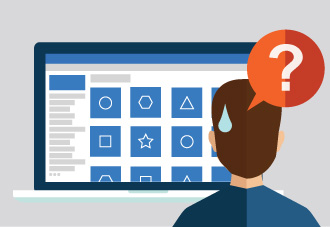


Ten years ago I was shocked by some of the ideas shared in a TED talk by Barry Schwartz called "The Paradox of Choice". If you haven't seen it, you should take the next 20 minutes to watch it (or even better... you can read his book).
If you don't have time to watch it yourself, let me try to summarize his points:
In our society, we take for granted how much choice we have over just about every aspect of our lives: how we want our food prepared at a restaurant, options included in our new car, the options available when buying a pair of jeans. Choice means freedom, and we all strive for freedom because it makes our lives better. Choice lets us make individual decisions, which inevitably improve our welfare. We tend to think that the more choice we have, the happier we are. It makes perfect sense, right?
Wrong! Schwartz explains that too much choice actually makes us feel miserable. Using some hilarious examples, he tells us that when deciding the consumer products we buy or the lifestyle path we take, an overwhelming number of options exhausts our brains, paralyzes our actions, and ultimately undermines our happiness.
“With so many options to choose from, people find it very difficult to choose at all.” — Barry Schwartz
How does this translate into software?
I'm pretty sure that if Schwartz was about to repeat his talk today (his TED talk was recorded back in 2005) he would take the example of an app store to showcase the absurd amount of choice available to consumers.
The Apple app store has today over 1.4 million apps. From a psychological point of view, that's an insane amount of choice. It's no wonder that the average consumer downloads only a very limited number of apps. Where do you even begin?
Number of apps is not the only example that "more is less" in the software user experience. Think about your favorite app. The number of features that one application has may quickly turn into a cognitive "choice" problem. When a menu displays too many options, users have a difficult time deciding which one might help them get their work done. When a user is offered with too many alternative ways to do their tasks, and there is too much overlapping functionality, productivity is impacted. As Schwartz describes again and again, the result is that users suffer from the "paradox of choice".
How about enterprise software?
In enterprise software in particular, this "paradox of choice" problem becomes even more critical. Within the enterprise workloads of the common information worker, employees are under pressure to deliver results. Unlike the experience of exploring consumer-focused productivity and other entertainment-related apps on your personal device, employees within the enterprise want to achieve clear business goals. The paralysis and demoralization effects that Schwartz described, as a direct result of having too much choice, has become an important matter that undermines the overall success of your business.
Having too many apps for collaboration can create problems for all team members. Preference for an unsupported, consumer-grade productivity app is not just a personal choice, as the tools we use within the enterprise can impact (sometimes negatively) those around us. For example, if I decide to use email, some of my colleagues use a shared folder, some others use their DropBox personal account, and maybe another peer shares her work in a SharePoint site. With all of these tools and platforms and their differing standards for communication, sharing, security, and many other considerations, collaboration is broken. You could say that more is actually less. By providing too much choice about the apps your team can select and use, we are creating data silos, channel mismatches, content duplication, and many other deficiencies. If too much choice undermines happiness, it goes without saying that too much choice around enterprise collaboration also undermines productivity.
How to put it to work
Schwartz's book "The Paradox Choice: Why More is Less" was published in 2014 with a clear set of recommendation on how to minimize this effect.
Schwartz offers eleven practical steps on how to limit choices to a manageable number, to have the discipline to focus on those that are important and ignore the rest, and ultimately to derive greater satisfaction from the choices you make. More than 10 years since publishing, and I'm a bit surprised at how little the software industry has listened to Schwartz's enlightening theories and corresponding research. Enterprise software keeps leaning towards the opposite approach, always providing more choice, more apps, more features, more options, more settings. Not surprisingly, some of the fastest growing platforms and solutions today actually have a simplified approach, with limited but focused options -- concentrating on core capabilities that provide value to the user.
I'm a bit surprised at how little the software industry has listened to Schwartz's enlightening theories and corresponding research. Enterprise software keeps leaning towards the opposite approach...
Of course, at Beezy we take pride in crafting a product that takes this paradox very seriously, and we make it part of our minimalist design approach.
We will never create choice for the sake of choice.
We will always try to make our software more focused, we will try to do less until it makes real sense to add something new. By design, we restrict user choice while providing intuitive default settings.
Make your software more focused. Do less, restrict user choice, and instead provide good default settings.
The result of this approach is that employees get more out of the tools they use, and overall, they are happier at work. We'd love to show you more about how Beezy provides powerful but intuitive solutions for Office 365 and SharePoint. Come see our award-winning UX and contact us for a live demo today.
These Stories on Beezy

No Comments Yet
Let us know what you think